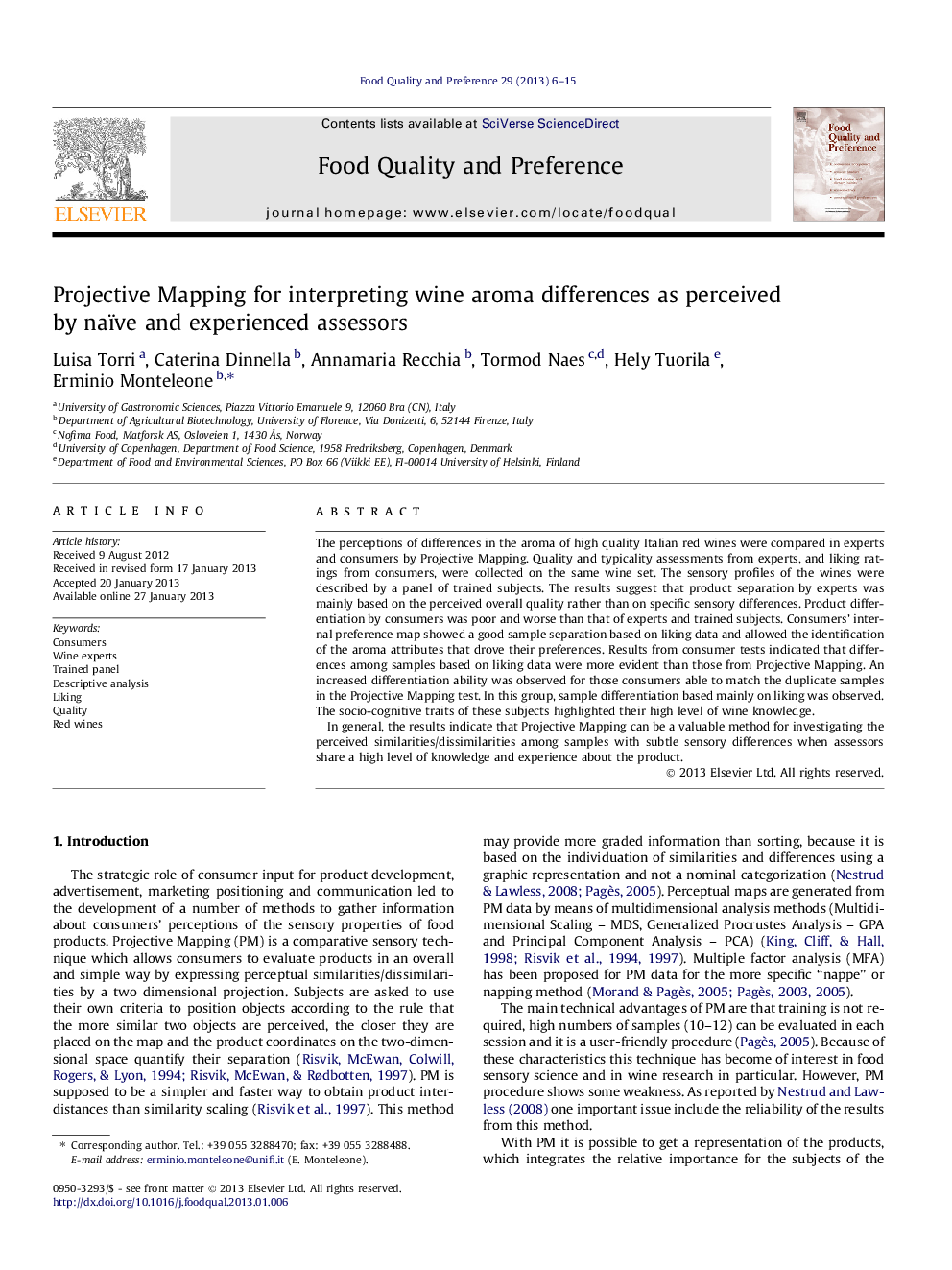| Article ID | Journal | Published Year | Pages | File Type |
|---|---|---|---|---|
| 4317334 | Food Quality and Preference | 2013 | 10 Pages |
The perceptions of differences in the aroma of high quality Italian red wines were compared in experts and consumers by Projective Mapping. Quality and typicality assessments from experts, and liking ratings from consumers, were collected on the same wine set. The sensory profiles of the wines were described by a panel of trained subjects. The results suggest that product separation by experts was mainly based on the perceived overall quality rather than on specific sensory differences. Product differentiation by consumers was poor and worse than that of experts and trained subjects. Consumers’ internal preference map showed a good sample separation based on liking data and allowed the identification of the aroma attributes that drove their preferences. Results from consumer tests indicated that differences among samples based on liking data were more evident than those from Projective Mapping. An increased differentiation ability was observed for those consumers able to match the duplicate samples in the Projective Mapping test. In this group, sample differentiation based mainly on liking was observed. The socio-cognitive traits of these subjects highlighted their high level of wine knowledge.In general, the results indicate that Projective Mapping can be a valuable method for investigating the perceived similarities/dissimilarities among samples with subtle sensory differences when assessors share a high level of knowledge and experience about the product.
► Projective maps from consumers and experts. ► Perception of similarities/dissimilarities among samples with subtle sensory differences. ► Criteria for product categorization (liking and overall quality).
